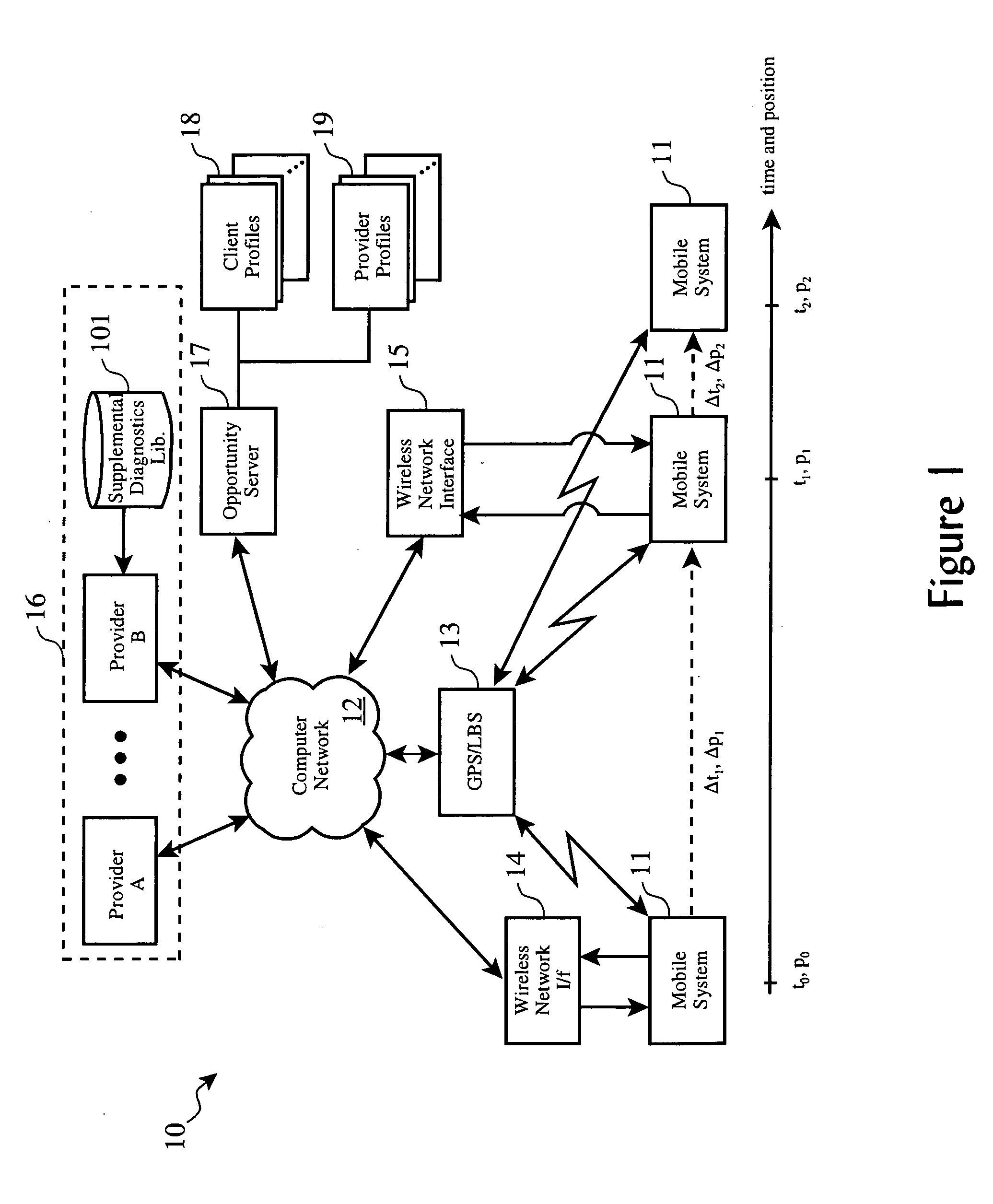On-demand system for supplemental diagnostic and service resource planning for mobile systems
a mobile system and supplemental diagnostic technology, applied in the field of mobile system supplemental diagnostic and service resource planning, can solve the problems of reducing the options of the driver, causing expensive damage to the engine of the vehicle, and having to make a fairly uninformed decision as to how to proceed
- Summary
- Abstract
- Description
- Claims
- Application Information
AI Technical Summary
Benefits of technology
Problems solved by technology
Method used
Image
Examples
Embodiment Construction
[0039] The system and method integrate several well-known technologies via an application server and one or more computer networks, as shown in FIG. 1. The following technologies and terms are used within this disclosure.
[0040] Location Based Services (“LBS”)—a set of services which are associated with and driven by the location of a device such as a wireless telephone, personal digital assistant, or other computer. LBS may use one of several available technologies to determine the geographic location of a device, including but not limited to GPS, the Federal Communication Commission's Enhanced 911 (“E911”) or micro-networks such as open-standard BlueTooth.
[0041] Global Positioning System (“GPS”)—any one of several available technologies for determining geographic position electronically, including most prevalently use of a network of satellites in geosynchronous orbit and a receiver to pinpoint the receiver's location. Older systems, such as LORAN and TRANSIT, may be used, as wel...
PUM
 Login to View More
Login to View More Abstract
Description
Claims
Application Information
 Login to View More
Login to View More - R&D
- Intellectual Property
- Life Sciences
- Materials
- Tech Scout
- Unparalleled Data Quality
- Higher Quality Content
- 60% Fewer Hallucinations
Browse by: Latest US Patents, China's latest patents, Technical Efficacy Thesaurus, Application Domain, Technology Topic, Popular Technical Reports.
© 2025 PatSnap. All rights reserved.Legal|Privacy policy|Modern Slavery Act Transparency Statement|Sitemap|About US| Contact US: help@patsnap.com



